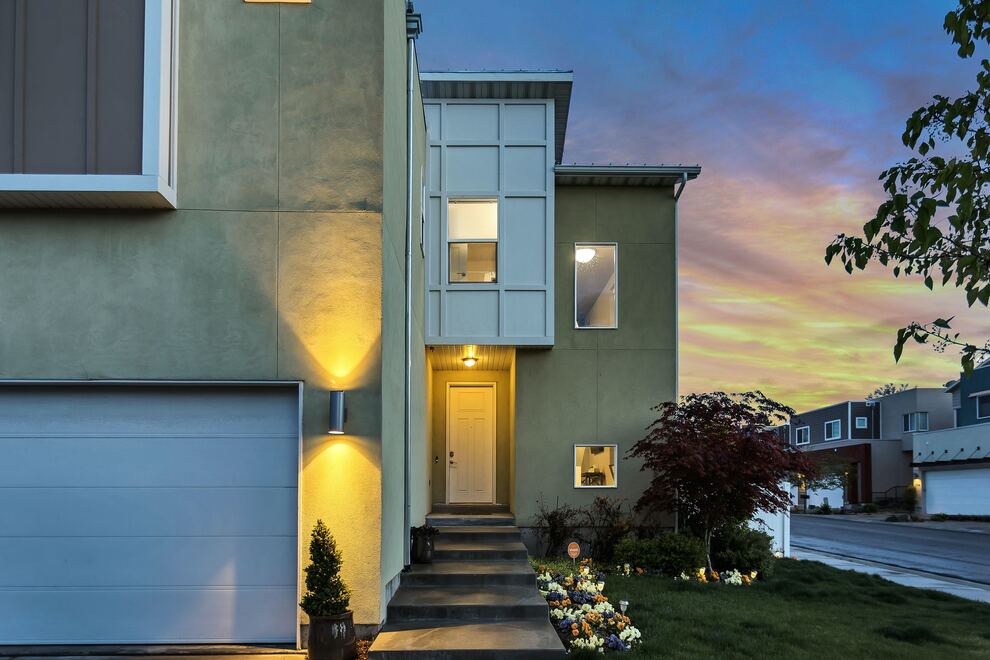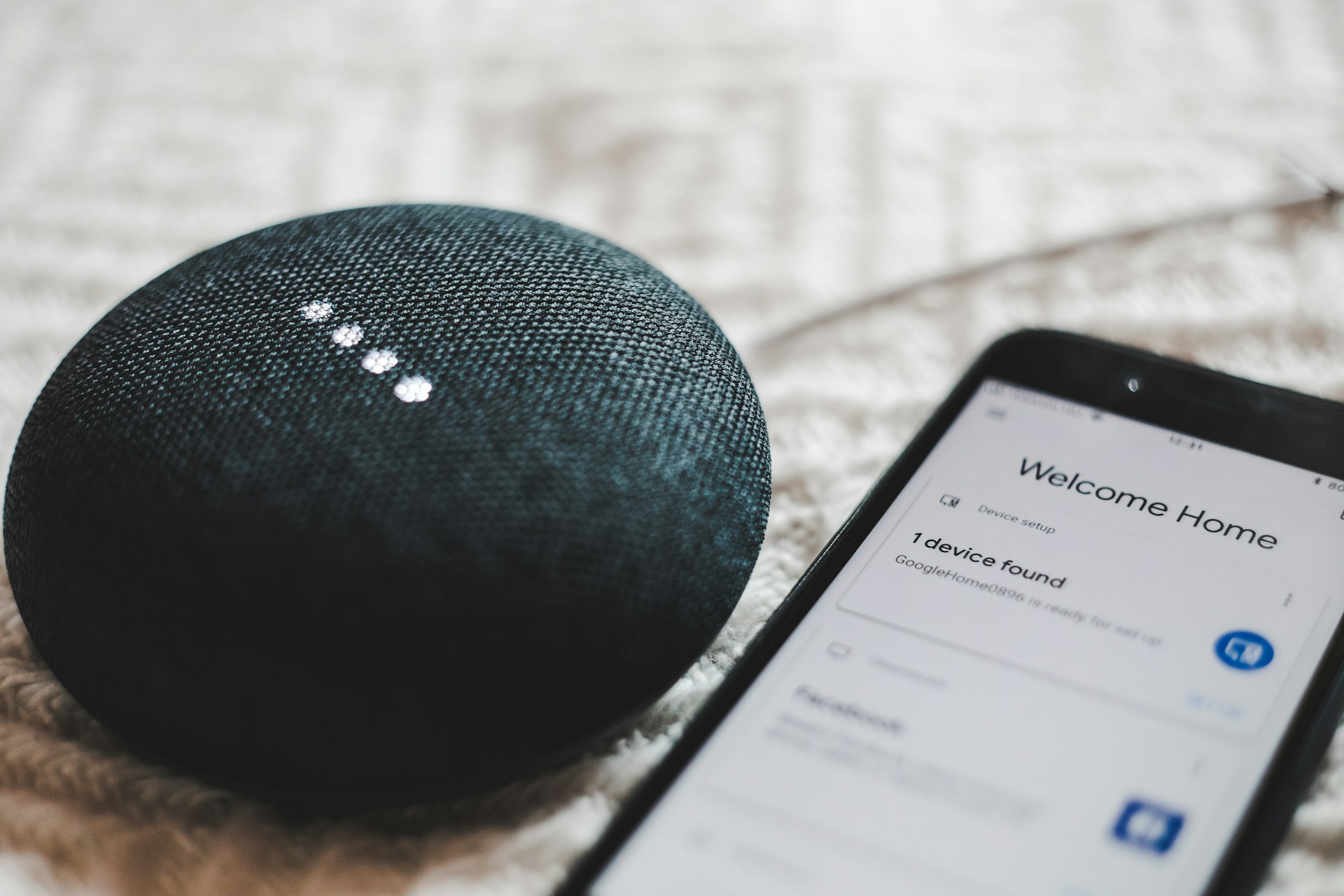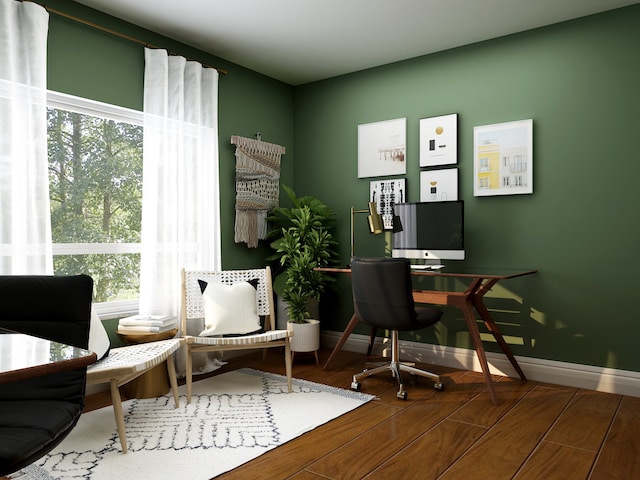Home is our haven, a place where we seek solace and safety. However, ensuring home protection requires continuous effort and proactive measures. It’s important to note that safeguarding your home doesn’t necessarily mean an expensive affair. In fact, home security on a budget is a realistic and attainable goal. From protecting against burglaries to preparing for fires, natural disasters, and other potential hazards, keeping our homes secure is crucial. By combining practical safety measures with a robust security system, homeowners can create a safe environment that mitigates potential risks.
Keeping Your House Secure
Securing your home encompasses a range of preventive measures to safeguard your valuable assets and provide peace of mind. Evaluating vulnerabilities and potential entry points is essential to begin the process. Reinforcing windows, installing sturdy doors with high-quality locks, and considering additional measures like security cameras and motion sensors are effective deterrents against potential intruders. Collaborating with neighbors through neighborhood watch programs can foster a safer environment and collective responsibility.
In addition to burglaries, it’s essential not to overlook other threats, such as fires and natural disasters. Equipping your home with smoke detectors, fire extinguishers, and carbon monoxide detectors is crucial for early detection and swift response. Understanding the specific risks in your area, such as earthquakes, floods, or hurricanes, and taking appropriate precautions can significantly reduce their impact.
A comprehensive security plan protects against immediate risks and can impact long-term financial security. One aspect that goes hand in hand with home security is home insurance. Home insurance companies often consider the level of protection implemented in a home when determining insurance rates. By fortifying your home, you minimize potential losses and may be eligible for lower insurance premiums, ensuring added protection in unfortunate events.
What the experts say
Whether you’re a new homeowner or looking to enhance your existing security measures, our experts’ insights will help you establish a robust defense against unforeseen threats.
What are the most effective methods of transforming a home into a ‘hard target’ for potential intruders?
“When making your home a hard target for burglary, you don’t want to go too far and make it look like a prison. There are a few things you can do to deter criminals and boost your home’s curb appeal. First, add light to your property. By increasing the light levels of your porch, yard, and sides of your home, you can take away a burglar’s best asset: stealth. A bad guy will think twice about approaching your home if he thinks he’ll be seen. For an even better result, try adding lighting to give your home a touch of class. Second, be selective with your landscaping. Keep shrubbery, trees, and grass trim so no one can hide in them. Cut bushes from the top and bottom to see feet below the trim line. Also, consider adding crushed rocks around the sides of your home so you can hear anyone approaching. These tips can keep criminals on the street so they never even try to break in. In addition to increasing the security of your home, these tricks might win you the yard of the month.”
Andy Murphy | The Secure Dad
What factors should I consider when choosing smart locks for my home security needs and how can I ensure compatibility with other security systems and devices?
“With advances in smart home technology, modern smart locks can fit many needs of today’s homeowners. There are two key considerations any homeowner should include in their search: which security features fit your lifestyle and compatibility of the current installation.
- Security features: Homeowners should know what type of system they’re using (Z-Wave or Zigbee) to tell if the lock will be compatible with the systems already in place in their home. In addition to Zigbee- and Z-Wave-compatible locks, Kwikset offers locks that work within their own Kwikset app, including Halo and Aura. Halo is Wi-Fi-enabled and works anywhere there is a Wi-Fi connection. You can operate and monitor the lock from anywhere. Security features such as these allow for many safety benefits, including when the lock is in use and by whom. Securing your smart home network is important to prevent unauthorized access to these devices and protect your privacy. Homeowners should also look for features such as strong encryption, two-factor authentication, and tamper alerts. Consider features that improve the lock’s resistance to physical attacks, such as the Kwikset SmartKey Security™ keyway, which is bump-proof and pick-resistant.
- Compatibility in Installation: Check the compatibility of the smart lock with your existing door and lock mechanism. Kwikset smart locks can retrofit onto standard deadbolts. Ensure that your lock is compatible with your door type and dimensions. Also, you don’t have to call or pay for a locksmith every time. SmartKey Security™ features re-key technology, allowing you to re-key your locks in seconds.
A smart lock must speak to other smart home products you already use. Kwikset smart locks with Home Connect technology integrate with your security system or home automation controller.”
What are the benefits of cellular-based cameras?
“Cellular-based outdoor security cameras offer several advantages that make them an excellent choice for home security.
One key benefit is the stability of LTE signals compared to Wi-Fi. Unlike Wi-Fi, which can be prone to interference and disruptions, LTE signals provide a more reliable connection.
Secondly, a significant advantage of cellular-based cameras is their resistance to signal jammers, a potential tool that burglars might use to disrupt traditional Wi-Fi-based systems. LTE signals are more secure and less susceptible to interference, making it challenging for intruders to compromise the camera’s functionality.
Moreover, the security of cellular networks adds an extra layer of protection against hacking attempts. Cellular signals are inherently more secure than Wi-Fi, reducing the risk of unauthorized access to your surveillance system. This is particularly important for safeguarding sensitive information and maintaining the privacy of your home.
Another noteworthy feature is the use of battery-powered cameras backed by solar panels. This combination ensures continuous operation even during power outages. Traditional wired cameras may become non-functional in the absence of electricity, leaving your home vulnerable. The battery and solar-powered setup not only guarantees uninterrupted surveillance but also contributes to eco-friendly and cost-effective security solutions.
This is why at VOSKER®, we believe that our surveillance technology is a great solution for both professionals and home owners alike.”
Pierre Charrière | Vosker

What key features should I look for in a smart home security camera?
When choosing a smart home security camera, it’s crucial to prioritize features such as long-range performance and cutting-edge object detection. While most smart home cameras are equipped with fundamental capabilities like night vision, activity notifications, and weather-resistant hardware, opting for a camera with advanced features provides better protection for your home and loved ones.
At Abode, we believe security cameras should keep an eye on what matters most: the home. Smart home security cameras with a long-range allow you to place the camera anywhere on your property, opening possibilities that standard security cameras can’t support. Imagine being able to place the camera on your mailbox and point it toward your home or place the camera at the edge of your backyard to keep an eye on your kids’ playground. Our long-range security camera can be installed away from your Wi-Fi hub and still provide reliable connectivity.
With AI evolving rapidly, our smart home security camera is integrated with advanced AI features to perform object detection, facial recognition, and anomaly detection. This element is beneficial in a few ways: you will only get activity notifications for meaningful events like the detection of people, packages, or pets, you can program the camera to recognize faces and get special notifications for each registered individual, and motion will trigger the camera to record events, otherwise the camera will enter sleep mode and preserve battery life.
Finding a high-tech but user-friendly smart home security camera is key. The new Abode Edge Camera offers these advanced features to give you peace of mind that your loved ones and every piece of your property are protected.
Chris Carney | Founder & CEO at Abode
What are the crucial pointers to remember when constructing a safe room?
“Safe rooms are the ultimate in securing yourself and your family in the event of an emergency situation. These rooms can also lock up and secure your weapons and valuables. There are many factors to consider when building a new safe room. The first thing to consider is what kind of threats you are trying to protect from. Then you need to decide what your room will be built out of and where it will be located. Will you be converting an existing room that has standard 2 x 4 or 2 x 6 studs, or will you be pouring a concrete block wall? A concrete block wall will be more secure, but a standard room with 2 x 4 or 2 x 6 walls will be easier to convert. If you’re building a new house where you can build the room from scratch or have an existing concrete block wall in a basement, this is the best solution for a safe room. You want a room that is quickly accessed and easily secured.
The next thing to consider is what kind of vault door you need to secure the safe room. There are many security levels and various levels of fire protection available. The thicker the steel in the door, the more secure it will be and the harder it will be to break into. There are also two types of vault doors: inswing, where the door swings into the room, or outswing, where the door swings out. An inward swing door is used so that the door will still open if debris falls in front of the door. An outward swing door is pretty standard for a safe room and will swing outward as you open it. Ensure that the vault door you purchase has a safety release inside so that if you are inside the safe room and the door is locked, you can release the door to get out. It is also recommended that you purchase an electronic lock or redundant lock (two ways to open in case one fails) for your vault door. This way, when you shut the vault door, it automatically locks behind you.
You may also need some ventilation inside the safe room; otherwise, you may end up with a mildew problem. This will also provide better airflow inside the safe room. This is especially true if you are going to be storing guns in your safe room and cleaning them regularly. Good airflow will prevent the buildup of dangerous chemical fumes.”
Dominic Schwebs | Safe and Vault Store.com
What features should I look for on smart sensors for heightened security?
“Look for bank-grade security features when considering adding smart sensors to your home monitoring. Cybersecurity in strongholds like firewalls on your home network, anti-virus software on your computers, and two-factor authentication for smartphones and websites are critical. But you can’t put all your safeguards in those things and leave the temperature sensor in your fish tank vulnerable. Security must be sustained at all communication points between the sensor, cellular or Ethernet gateway, network, network controller, and the cloud. Robust smart sensor data security with encryption technology can help protect your home’s sensor network and data.
I suggest using one sensor management app on a smartphone or PC to limit outside entry points.Sensor systems that include the following layered security platform can protect data during sensing to its review:
· Strong encryption functions such as the Diffie-Hellman key exchange algorithm and 128-bit Advanced Encryption Standard (AES-128)
· Transport Layer Security (TLS) encryption
· An end-to-end authentication layer using unique tokens with 256-bit Secure Hash Algorithm 3 (SHA-3)
With these strong data security layers, sensors with their valuable, actionable data and networks are protected.”
Nick Mecham | Monnit
What are the key features and benefits of using smart locks as part of a comprehensive home security solution?
“Smart locks provide essential features and benefits for a robust and comprehensive home security system. From a security perspective, they provide remote access and control, enabling you to lock or unlock doors from anywhere, reducing the risk of unauthorized entry. Keyless entry options like PIN codes and biometrics eliminate the vulnerabilities associated with traditional keys, such as loss or theft. Additionally, activity monitoring allows you to track and monitor who enters or exits your home, enhancing overall security awareness. Integration with home automation systems allows for synchronized security measures, such as automatically locking doors and adjusting settings when you’re away. Moreover, smart locks offer temporary access management, limiting access to specific time windows, and can integrate with other security devices, creating a comprehensive and powerful home security solution that will give you peace of mind!”
U-tec Team | U-tec
How can I integrate smart home technology with my security system for added convenience and control?
“Integrating smart home technology with your security system can significantly enhance your home’s convenience and control. Here’s how you can do it, particularly focusing on the integration of security camera systems:
- Choose a Compatible Security System: Ensure your security system and smart home devices are compatible. Many modern systems use common standards like Z-Wave or Wi-Fi for connectivity. These systems offer wide compatibility with various smart devices.
- Integrate Smart Cameras: Security cameras can be the ‘eyes’ of your system. Look for cameras that integrate seamlessly with your security system. Features to consider include motion detection, night vision, two-way audio, and the ability to send push alerts to your phone. Smart cameras may come with their own apps that allow you to view live footage from anywhere.
- Smart Door Locks and Access Control: Integrate smart locks with your security system. This allows you to remotely control access to your home and receive alerts when someone enters or leaves. You can also set up cameras to record when someone unlocks a door.
- Smart Lighting: Link smart lighting with your security cameras. Lights can be programmed to turn on when cameras detect motion, both deterring potential intruders and providing better visibility for camera recording.
- Home Automation Hub: Use a central hub to control all your smart devices. This hub can be a physical device like a Google Home or a software platform. It allows you to create routines or scenes, for example, activating outdoor lights and cameras at sunset.
- Mobile App Integration: Utilize mobile apps for real-time monitoring and control. Most security systems offer a mobile app that integrates with other smart home devices, allowing you to view camera feeds, lock doors, or turn lights on and off from your smartphone.
- Voice Control Integration: For added convenience, integrate voice control through assistants like Amazon Alexa. This allows you to control your security and smart home devices through voice commands.
- Automated Alerts and Notifications: Set up your system to send you alerts based on certain triggers, like when a camera detects motion or a door is unlocked. This keeps you informed in real-time.
- Regular Updates and Maintenance: Keep your smart home and security system updated. Firmware and software updates often include security patches and new features that enhance functionality and safety.
By following these steps, you can create a more interconnected and responsive security system that not only protects your home but also adds to the ease of managing it.”
Ray Ansari from CCTV Camera World
What factors should I consider when deciding between wired and wireless security systems?
“Home security has evolved over the last ten years. Many professional installers install wireless systems as wireless technology has evolved and improved in range, reliability, and cost. Wired systems are still used today, but often based on application and at a premium cost due to increased component cost and additional installation labor. Wireless systems today offer reliability, low labor cost to install, and have improved battery life from 5-7 years. Whether you choose a wired or wireless security system is often based on personal preference or what’s best for the circumstances of your home or business.
Wired Security Systems:
-Historically, wired security systems were the only option. Wireless systems began to arrive on the market in the 1980s but were very expensive and less reliable than the versions available today.
-Today wired systems can be preferred because they are less susceptible to hackers and wireless jamming.
-If you have a power outage, wired security systems use a backup battery system to power the alarm panel and powered devices, so there is no disruption in service.
-Because wired security systems require running cables, they can be more complex and time-consuming to install. With this requirement, there is a possibility for property damage during installation. – -We recommend leaving it up to the professionals to reduce the risk of damaging wiring, plumbing, doors or walls.
Wireless Security Systems:
-Wireless security systems can be easier to install since they do not require running wires or cables.
-Wireless solutions are good options for renters who may not be able to run wires behind walls.
-Wireless systems operate off batteries, so they can be installed in homes that do not have wires or electrical access.
-Wireless systems do require more maintenance over time as you’ll have to change the batteries when they run low, so there is no disruption in service.
-Historically, wireless security systems have been more susceptible to hackers and jamming, but advancements in technology have made wireless security systems even more secure against these types of attacks. For example, CPI Security uses fully encrypted two-way wireless communication between the security system panel and device, preventing hackers. In addition, CPI’s wireless security sensors feature channel-hopping technology, which allows the security sensors to dynamically move to the best frequencies, improving communication and battery life, while reducing the threat of RF jamming during communication transmission.”
Kristi O’Connor | CPI Security Systems
How could a residential fire suppression system contribute to homes’ overall security and safety, and what are their advantages over traditional fire safety measures?
“An automatic (keyword automatic) fire suppression system over the stove, with a provided shutoff to kill the power to the stove, provides 24/7 fire protection specifically for a critical area of the home. And since NFPA declares the kitchen as the number one site for home fires, specifically the stove in the kitchen, you are addressing a very large hazard when it comes to protecting your investment. Once again, I can only speak specifically about an automatic fire suppression system with a fuel shutoff over the stove since this is the product we sell and promote. I could only compare “traditional fire safety measures” to a home sprinkler system. While I advocate for home sprinklers, having a fire system that directly addresses a cooking fire is considerably more effective since you are directing the suppression agent quicker to the fire, suppressing it, and turning the stove off in the process, mitigating damage. However, a home sprinkler has its place as well. For example, if a coffee maker or toaster caught fire on a counter away from the stove, then the sprinkler system would be effective in addressing that fire. So with that said, in my opinion, these two “suppression” systems complement each other.”
Paul Rouse | Guardian Safety Solutions International
Can you elaborate on the significance of employing a security guard when residing in a gated community?
“Why do people want to live in a gated community in the first place? There is an aspect of prestige, social exclusivity, and wealth signaling to it, of course, but why are gated communities considered prestigious and socially exclusive in the first place? It’s right there in the name; it’s the gate. What do gates do? They make sure that the people on the inside get to control who can come in. And you can’t really do that without security. That’s what people are buying when they move to a gated community, a sense of security. Lower crime, you know all your neighbors, and any vandals or burglars or drug dealers have to climb over a fence to get in. When we do gated community security at Ranger Guard, we make sure customer service plays a top priority. Guards need to be greeting people while on patrol, they need to know the neighborhood, and they need to look the part in a smart uniform that fits the vibe of the community. If a guard knows the residents well, they will know when something or someone is out of place and can take the right action to protect people. And that’s exactly what residents in gated communities pay for when they choose to live in a place like that. To be honest, I would say hiring security guards is essential for a gated community.”
Jonah Nathan | Ranger Guard
What key precautions should I take to secure my home while hiring and engaging with professional cleaning services?
“It’s important to ensure your home’s security while hiring professional services. Inviting a cleaning company to clean your home is a big deal. Here are some steps you can take for added peace of mind:
- *Vet the Company:* Always hire from a reputable company that is licensed, bonded, and insured.
- *Secure Valuables:* We recommend that you secure any valuables or sensitive documents before our visit. This not only protects your belongings but also helps the cleaners work more efficiently.
- *Establish Clear Boundaries:* It’s perfectly acceptable to set boundaries or off-limits areas in your home. If there are rooms or areas you’d prefer our cleaners not enter, make sure to mention them.
- *Provide Feedback:* Communication is key. If you have any concerns, let the company know immediately.”
Cristobal Mondragon | Queen Bee Cleaning Service
In a world of ever-present security concerns, safeguarding our homes has become a paramount responsibility. By incorporating the expert tips and insights shared in this article, homeowners can take proactive steps toward creating a safe and secure environment around the clock. From fortifying entry points to implementing advanced security systems, from being prepared for potential disasters to leveraging technological advancements, the path to a protected home lies in our hands. By prioritizing home security and staying informed about the latest advances, we can ensure the tranquility and peace of mind of knowing our homes are shielded from potential risks. Let these expert recommendations guide you to a more secure and protected home.




